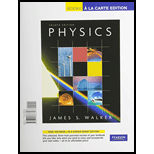
Concept explainers
Silicon
Interpretation:
To estimate the abundances of first two isotopes of silicon.
Concept introduction:
Average atomic mass = It may be defined as the sum of all the masses of its known isotopes, each multiplied with its natural abundance (in percentage) divided by 100. Mathematically,
Answer to Problem 27QAP
Abundances of first two isotopes of silicon are 92.09 % and 4.95 % respectively.
Explanation of Solution
According to question there are three isotopes of silicon (Si) such that:
Mass of heaviest isotope = 29.9738 amu
Abundance of heaviest isotope = 2.96 % (given)
Mass of first isotope = 27.9769 amu
Abundance of first isotope = Let it be ‘k’ %.
Mass of second isotope = 28.9765 amu
Since sum of abundances must be equal to 100 %. Therefore,
Abundance of second isotope = [100- (k + 2.96)] = (97.04- k) %
Making tabular data as:
| Isotopes | Mass of isotopes(amu) | % abundance |
| Heaviest isotope | 29.9738 | 2.96 |
| First isotope | 27.9769 | k |
| Second isotope | 28.9765 | (97.04 - k) |
Average atomic mass of silicon (Si) = 28.0855 amu.
Substituting the values in formula to get average atomic mass as:
Hence abundance of first isotope = k = 92.09 %
Abundance of second isotope = 97.04 − k = 97.04 − 92.09 = 4.95 %
Abundances of first two isotopes of silicon are 92.09 % and 4.95 % respectively.
Want to see more full solutions like this?
Chapter 2 Solutions
Student Solutions Manual For Masterton/hurley's Chemistry: Principles And Reactions, 8th
- Argon has three naturally occurring isotopes: 0.3336% 36Ar, 0.063% 38Ar, and 99.60% 40Ar. Estimate the average atomic mass of argon. If the masses of the isotopes are 35.968 u, 37.963 u, and 39.962 u, respectively, calculate the average atomic mass of natural argon.arrow_forwardTwo elements, R and Q, combine to form two binary compounds. In the first compound, 14.0 g of R combines with 3.00 g of Q. In the second compound, 7.00 g of R combines with 4.50 g of Q. Show that these data are in accord with the law of multiple proportions. If the formula of the second compound is RQ, what is the formula of the first compound?arrow_forwardThere are 2.619 1022 atoms in 1.000 g of sodium. Assume that sodium atoms are spheres of radius 1.86 and that they are lined up side by side. How many miles in length is the line of sodium atoms?arrow_forward
- Copper atoms. (a) What is the average mass of one copper atom? (b) Students in a college computer science class once sued the college because they were asked to calculate the cost of one atom and could not do it. But you are in a chemistry course, and you can do this. (See E. Felsenthal, Wall Street Journal, May 9, 1995.) If the cost of 2.0-mm diameter copper wire (99.9995% pure] is currently 41.70 for 7.0 g, what is the cost of one copper atom?arrow_forwardThere are 1.699 1022 atoms in 1.000 g of chlorine. Assume that chlorine atoms are spheres of radius 0.99 and that they are lined up side by side in a 0.5-g sample. How many miles in length is the line of chlorine atoms in the sample?arrow_forwardThe element silver (Ag) has two naturally occurring isotopes: 109 Ag and 107Ag with a mass of 106.905 u. Silver consists of 51.82% 107Ag and has an average atomic mass of 107.868 u. Calculate the mass of 109Ag.arrow_forward
- The element europium exists in nature as two isotopes: 151Eu has a mass of 150.9196 u and 153Eu has a mass of 152.9209 u. The average atomic mass of europium is 151.96 u. Calculate the relative abundance of the two europium isotopes.arrow_forwardStrontium has four stable isotopes. Strontium-84 has a very low natural abundance, but 86Sr, 87Sr, and 88Sr are all reasonably abundant. Knowing that the atomic weight of strontium is 87.62, which of the more abundant isotopes predominates?arrow_forwardWhen a sample of phosphorus burns in air, the compound P4O10 forms. One experiment showed that 0.744 g of phosphorus formed 1.704 g of P4O10. Use this information to determine the ratio of the atomic weights of phosphorus and oxygen (mass P/mass O). If the atomic weight of oxygen is assumed to be 16.000, calculate the atomic weight of phosphorus.arrow_forward
- The element rhenium (Re) bas two naturally occurring isotopes, 185Re and 187Re, with an average atomic mass of 186.207 u. Rhenium is 62.60% 187Re, and the atomic mass of 187Re is 186.956 u. Calculate the mass of 185Re.arrow_forwardTwo compounds of iron and chlorine, A and B, contain 1.270 g and 1.904 g of chlorine, respectively, for each gram of iron. Show that these amounts are in the ratio 2 : 3. Is this consistent with the law of multiple proportions? Explain.arrow_forward
 ChemistryChemistryISBN:9781305957404Author:Steven S. Zumdahl, Susan A. Zumdahl, Donald J. DeCostePublisher:Cengage Learning
ChemistryChemistryISBN:9781305957404Author:Steven S. Zumdahl, Susan A. Zumdahl, Donald J. DeCostePublisher:Cengage Learning
 Chemistry: An Atoms First ApproachChemistryISBN:9781305079243Author:Steven S. Zumdahl, Susan A. ZumdahlPublisher:Cengage Learning
Chemistry: An Atoms First ApproachChemistryISBN:9781305079243Author:Steven S. Zumdahl, Susan A. ZumdahlPublisher:Cengage Learning Chemistry: The Molecular ScienceChemistryISBN:9781285199047Author:John W. Moore, Conrad L. StanitskiPublisher:Cengage Learning
Chemistry: The Molecular ScienceChemistryISBN:9781285199047Author:John W. Moore, Conrad L. StanitskiPublisher:Cengage Learning Chemistry & Chemical ReactivityChemistryISBN:9781337399074Author:John C. Kotz, Paul M. Treichel, John Townsend, David TreichelPublisher:Cengage Learning
Chemistry & Chemical ReactivityChemistryISBN:9781337399074Author:John C. Kotz, Paul M. Treichel, John Townsend, David TreichelPublisher:Cengage Learning Chemistry & Chemical ReactivityChemistryISBN:9781133949640Author:John C. Kotz, Paul M. Treichel, John Townsend, David TreichelPublisher:Cengage Learning
Chemistry & Chemical ReactivityChemistryISBN:9781133949640Author:John C. Kotz, Paul M. Treichel, John Townsend, David TreichelPublisher:Cengage Learning





